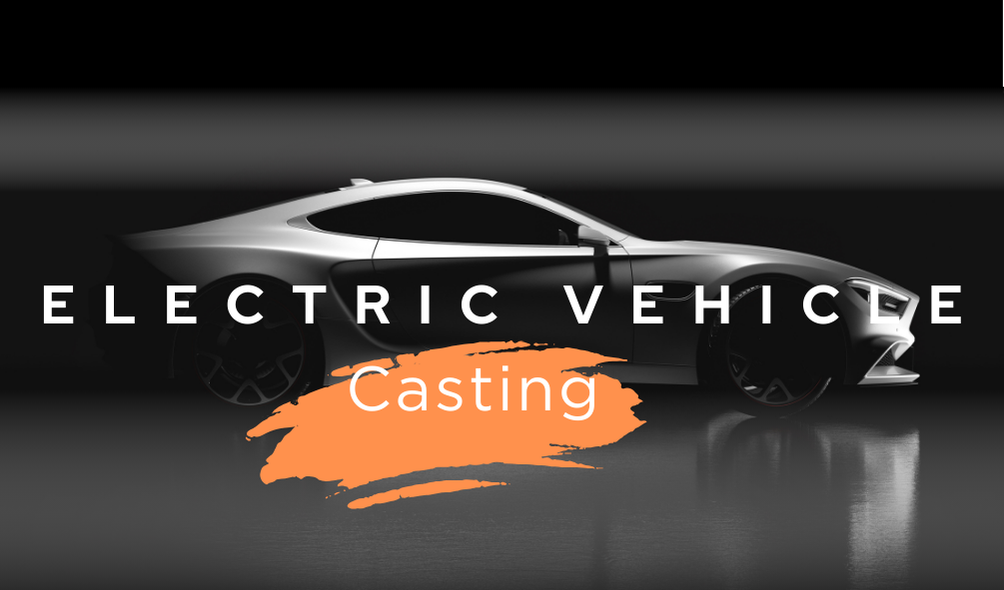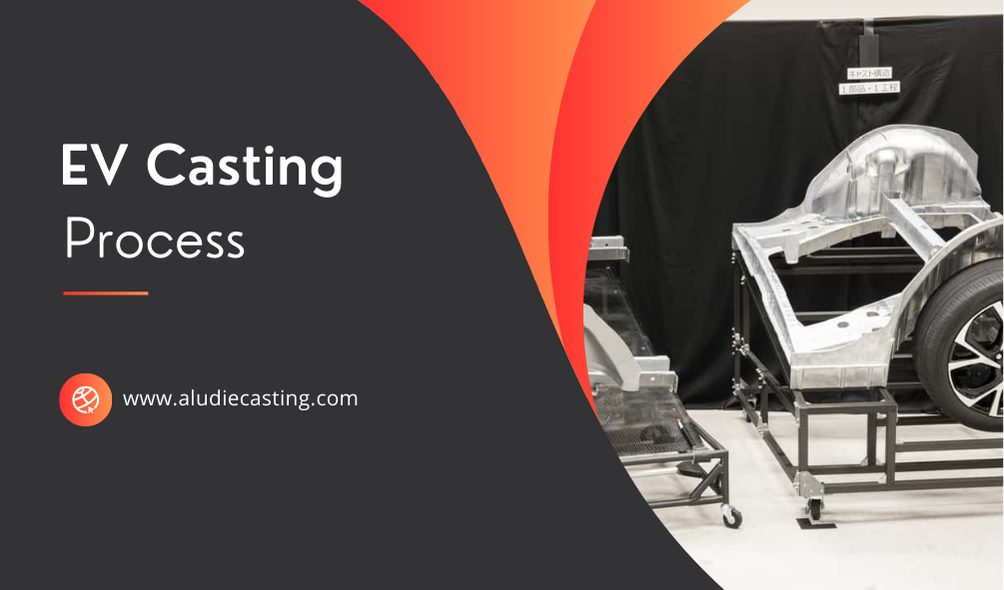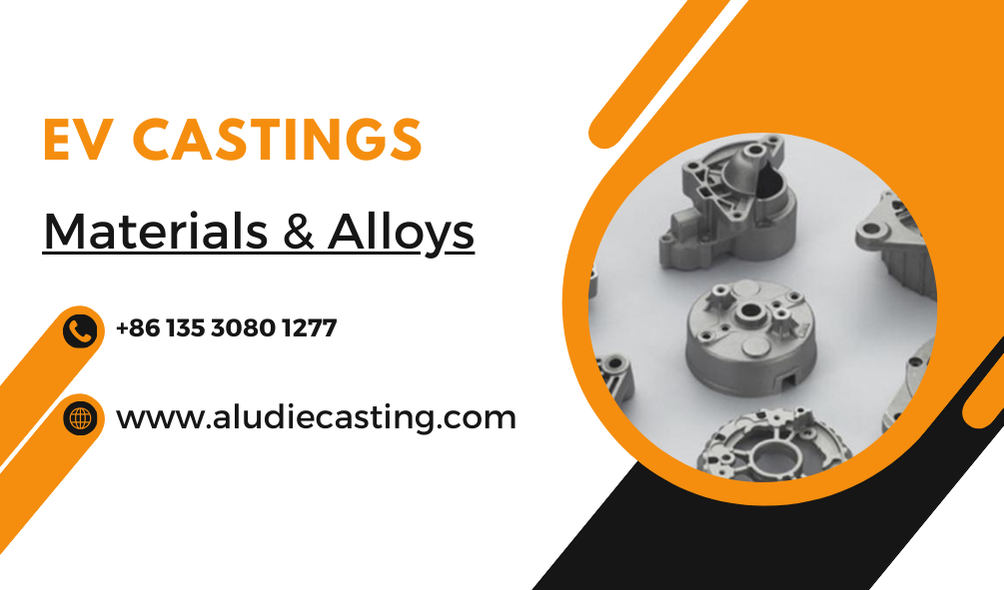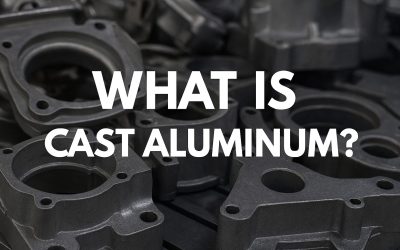Electric vehicle castings incorporates cutting-edge methods like giga casting to make complex, lightweight automotive parts. Electric vehicles are dominating the global automotive market. According to Market Watch, ev cars sales surged from 1 million to 1.6 million in 2023. Technology like electric vehicle castings with giga casting technique is offering a sustainable alternative to gasoline-powered cars.
Key Takeaways:
- EV Castings process
- Electric Vehicle casting process
- EV castings materials
- New Alloys and Composites in EV Die Casting
EV Castings Processes
Electric vehicle castings are a comprehensive process involving critical steps to produce high-quality, efficient parts. It offers distinct advantages and limitations for shaping different components. Let’s look into the key processes involved in EV casting, including design, material preparation, various casting methods, and post-casting procedures.
1. Design and Mold Creation
Electric vehicle castings incorporate the foundational step of designing and creating die casting molds. In this process, computer-aided design software is adapted to create precise and intricate designs of the required EV components. These designs are capable of withstanding the high pressures and temperatures involved in casting. They are utilized to create molds made from steel or other durable materials, after their creation.
2. Material Preparation
The material preparation step is essential for achieving high-quality results in casting. This stage involves the selection and preparation of metal alloys, like aluminum. Aluminum is the is commonly used in electric vehicle casting due to its lightweight and strength properties. The manufacturers melt the alloys in furnaces to a specific temperature and prepare them for the casting process.
3. Casting Methods
EV castings components can be produced by adapting several casting methods, each with its specific advantages and applications.
I. High-Pressure Die Casting
II. Gravity Casting
III. Other Casting Techniques
I. High-Pressure Die Casting
Process Overview
In the high-pressure die-casting approach, the molten metal is injected into a mold cavity under extreme pressure. This method can expertly produce EV castings components with excellent surface finish and dimensional accuracy. and this is one of our mean die casting services, if you are looking for EV castings companies in China, we will be one of your best manufacturers. We are IATF 16949 and IAS 14000 certificate die casting manufacturer.
Benefits for Electric Vehicles
This process is beneficial for electric vehicles, producing large, complex casting parts in a single piece. It helps reduce the number of joints and welds required. It enhances the structural integrity of components and reduces their weight. That improves the vehicle’s efficacy and range.
Applications in Electric Vehicles
The manufacturer of electric vehicles prefers the high-pressure die-casting process (HPDC). This method allows them to create large, single-piece castings. It is specifically used to make various electric vehicle parts, like electric vehicle battery housing components, motor housings, and structural parts.
II. Gravity Casting
Process Overview
Manufacturers employ the gravity casting technique to pour molten metal into a mold while it is gravitationally drawn into place. It is a simpler method than high-pressure die-casting. This technique requires precise control over the pouring process to improve the quality of EV castings.
Benefits for Electric Vehicles
It is beneficial for creating large, thick-walled parts that require superior structural integrity. It can produce smaller productions or specialized components cost-effectively.
Applications in Electric Vehicles
This procedure is used to manufacture engine blocks, suspension parts, and other structural elements where high strength and durability are needed.
III. Other Casting Techniques
Sand Casting
A mold is created from a sand mixture to pour molten metal into the cavity in the aluminium sand casting method. It is suitable for producing complex, large components with intricate details.
Investment Casting
It is an effective casting strategy that may be employed to produce parts in perfect dimensions with better surface finishes, also called lost wax casting. This technique includes the creation of a wax mold of the part covered with a ceramic shell and then melting the wax to make a mold.
4. Cooling and Solidification
This step includes the cooling and solidification of metal after it is injected into the mold while still molten. The cooling rate may directly impact the microstructure and mechanical properties of the final components. Therefore, the control cooling technique helps achieve the desired strength and durability.
5. Removal and Cleaning
After the cooling and solidification process, the casting is removed from the mold by breaking the mold made with a sand mixture or opening the mold in the case of HPDC. it further involves the cleaning step, in which residual mold materials, flash, or oxide layers are removed.
6. Finishing and Inspection
Additional machining, polishing, and applying any necessary coating are done during the finishing and inspecting process. This phase helps the manufacturer create components with surface finishes and accurate dimensions. The inspection step ensures the output meets the required quality standard.
Benefits of EV Castings
Die-casting techniques provide several advantages for shaping the future of electric vehicles, especially when dealing with issues like weight, design, and cost. Let’s discover these benefits:
Weight Reduction and Improved Driving Range
Its primary benefit for electric vehicles is weight reduction. The lightweight material selections, such as aluminum in HPDC (high-pressure die-casting) reduce the overall weight of vehicles. Lightweight vehicles possess greater efficiency and improved driving range.
Design Flexibility and Complex Geometries
Electric vehicle castings can produce exceptional complex geometries and offer design flexibility, eliminating the need for traditional manufacturing methods. It helps in optimizing the parts for performance, including features like intricate cooling channels and integrated support structures.
Cost-effectiveness and Scalability
HPDC and gravity casting processes are both cost-effective and scalable. However, the initial setup costs for mold creation and equipment can be high. The per-unit cost decreases significantly with increased production volumes. This scalability helps make electric vehicles more affordable and accessible to a broader market.
Enhanced Structural Integrity and Durability
Electric vehicle castings enhance the structural integrity and durability of the vehicles for safety and longevity purposes. This method prevents the components from forming internal stresses, ensuring excellent mechanical properties. That can be necessary for parts exposed to high loads and stresses, like suspensions and battery housings.
Thermal Management Benefits
Thermal management is another effective benefit of EV castings. Components made through casting processes can include integrated cooling solutions. Casting helps to manage heat more efficiently and improves the overall performance and safety of the vehicle.
Materials Used in EV Castings
The appropriate selection of casting material makes a major difference in the output results. The manufacturer can successfully create lightweight vehicles with improved performance by choosing the right materials. Let’s discover the available options that can be employed for EV casting.
Aluminum Alloys
Aluminum alloys offer excellent features such as machinability, low density, durability, resistance to rust, and good formability. This material is significantly lightweight and possesses adequate strength for various EV components while offering good formability. Its superior corrosion resistance feature exhibits the longevity of EV parts exposed to environmental conditions.
Specific Aluminum Alloys
Specific aluminum alloys like A356, A6061, and 7050 possess high strength, castability, and good corrosion resistance, making them the preferred choice for casting. These alloys are used to meet the strength and durability requirements of parts like motor housings, high-stress applications, and battery enclosures.
Magnesium Alloys
Magnesium alloys like AZ81D offer lightweight and ease of casting properties. These materials are suitable for components requiring weight savings, such as battery frames and structural parts. The advancement in coating technologies has their viability, despite their lower corrosion resistance.
Zinc Alloys
Zinc material can be used for manufacturing small, intricate parts that require excellent dimensional stability. These alloys can be combined with aluminum and magnesium, allowing the manufacturer to optimize each component’s performance. Ensuring the balance of weight, strength, and durability in EVs.
Multi-Material Casting
Multi-material casting involves combinations of different alloys within a single component. This technique can enhance performance features like thermal management and structural integrity and help reduce weight. It is beneficial for creating complex parts that need varying properties across several sections.
Applications of EV Castings
● Motor Housings
● Battery Trays
● Transmission Cases
● Heat Sinks
● Inverters
Motor Housings
Motor housing parts protect the electric motors from external damage while ensuring proper thermal management. In particular, aluminum and magnesium are used to create this component because of their light weight, strength, and excellent heat dissipation properties.
Battery Trays
Battery trays secure and hold the battery cells of electric vehicles and can be produced with lightweight materials like aluminum. These alloys reduce the overall vehicle weight and improve the driving range. Additionally, these trays are designed to be strong and anti-corrosion, ensuring the longevity of the parts.
Transmission Cases
Transmission cases in electric vehicles serve as the components responsible for transferring the power from the motor to the wheels. Aluminum materials are a suitable choice for creating this application. Because it has high strength and the ability to withstand the mechanical stresses of power transmission.
Heat Sinks
the electronic components in electric vehicles generate excessive heat that can be managed by utilizing heat sinks. Aluminum can meet these applications’ needs for superior thermal conductivity. It helps maintain the optimal operating temperature and reduces the chances of overheating.
Inverters
Manufacturers employ inverter applications to convert the direct current of the vehicle into alternating current. They produce these parts with aluminum to make them effective for heat dissipation and protective against sensitive electronic components.
Challenges and Limitations of EV Castings
To address the several challenges, incorporating EVs requires continuous innovations in materials science, casting technology, and assembly. Discover some of the daunting challenges and limitations of EVs.
● Material Properties
● Porosity and Casting Defects
● Joining and Assembly
Material Properties
Material properties play a vital role in the output results. They pose inherent characteristics and may not always provide the required strength and durability for certain applications. The selection of material for EV casting needs to balance weight reduction with mechanical performance, which can be a complicated trade-off.
Porosity and Casting Defects
Porosity and numerous casting defects are crucial concerns in die-casting manufacturing. The porosity or the presence of tiny air pockets can occur during the casting process of metal.
This defect can weaken the structural integrity of the components and arise from various factors. Such as mismanagement in casting technique, inadequate mold design, or contamination. This challenge requires stringent process control and advanced quality inspection methods.
Joining and Assembly
Joining and assembly indicate another crucial challenge of cast components in electric vehicles. Traditional welding and fastening methods are preferred for lightweight materials like aluminum and magnesium.
The differences in thermal expansion and precise alignment needs can cause complications in the assembly process. To eliminate this challenge, friction stir welding or adhesive bonding is required. That can ensure the strong ability and reliability of the cast parts.
The Future of EV Casting
The integration of cutting-edge technologies and suitable alloys will drive the evolution of electric vehicle castings. However, its future holds immense potential for further advancements and breakthroughs:
● Additive Manufacturing for Casting Molds
● Simulation and Modeling
● New Alloys and Composites
Additive Manufacturing for Casting Molds
The industry of electrical vehicle components is revolutionizing via additive manufacturing or 3D printing. This technology reduces lead times and costs, offering rapid prototyping and customization of complex designs.
Additionally, this manufacturing enhances the overall efficiency and quality of parts by enabling more intricate and precise mold geometries.
New Alloys and Composites in EV Die Casting
Aluminum Alloys
· A380
· 6061
Properties of Aluminum Alloys for EV die castings
· Density: Approximately 2.7 g/cm³
· Melting Point: 660°C (1220°F)
· Young’s Modulus: 69 GPa (10,000 ksi)
· Tensile Strength: 90-690 MPa (13-100 ksi)
· Yield Strength: 50-600 MPa (7-87 ksi)
· Elongation at Break: 1-40%
· Thermal Conductivity: 150-200 W/m·K
Magnesium Alloys
· AZ91D
· AM60
Properties of Magnesium Alloys for EV die castings
· Density: Approximately 1.74 g/cm³
· Melting Point: 650°C (1202°F)
· Young’s Modulus: 45 GPa (6,500 ksi)
· Tensile Strength: 150-340 MPa (22-49 ksi)
· Yield Strength: 65-230 MPa (9-33 ksi)
· Elongation at Break: 2-10%
· Thermal Conductivity: 60-90 W/m·K
Zinc Alloys
· Zamak 3
· Zamak 5
Properties of Zinc Alloys for EV die castings
· Density: Approximately 6.6-6.7 g/cm³
· Melting Point: 420°C (788°F)
· Young’s Modulus: 83 GPa (12,000 ksi)
· Tensile Strength: 250-400 MPa (36-58 ksi)
· Yield Strength: 150-300 MPa (22-43 ksi)
· Elongation at Break: 1-10%
· Thermal Conductivity: 110-120 W/m·K
Conclusion:
Electric vehicle castings manufacturers are constantly seeking new ways to incorporate ev castings parts. Aludiecasting offers a diverse range of EV casting techniques. We use lightweight aluminum alloys to manufacture custom parts like motor housings and battery trays.







0 Comments